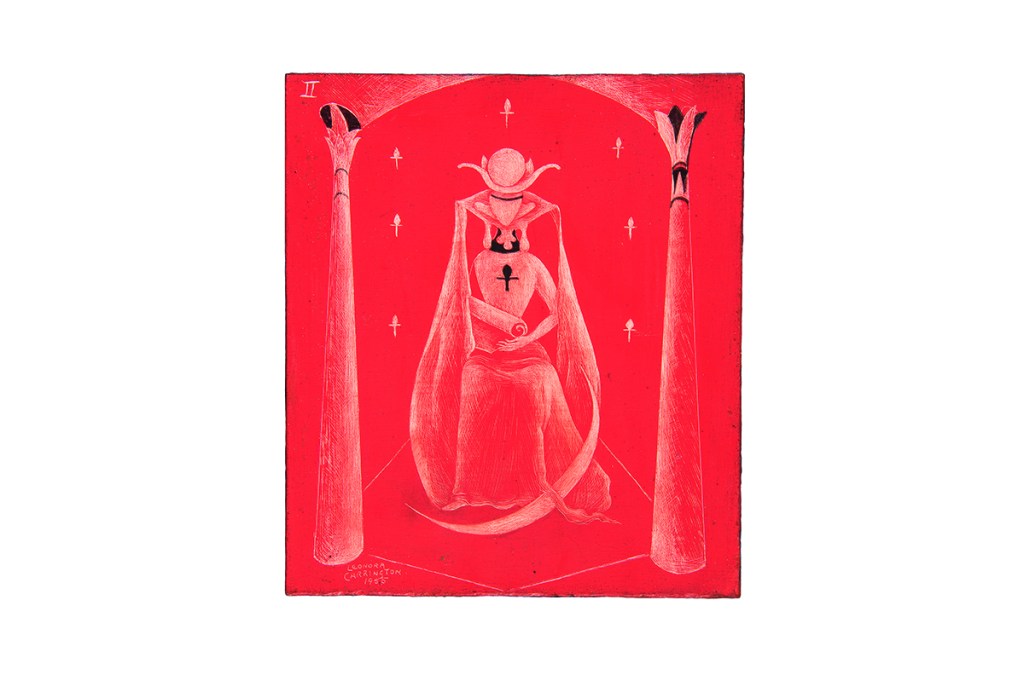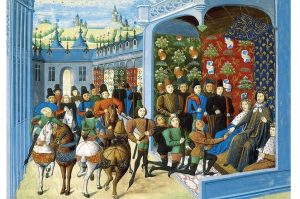Ever since Leonora Carrington, the last of the Surrealists, died in 2011, having made it to her 94th year with her creativity undimmed — like that other postwar English exile P.G. Wodehouse — her afterlife has reaffirmed the old maxim ‘Now that I’m dead I’m finally making a living’. Her collected short stories (as grotesquely funny and sharp as her paintings and their titles) were published on her centenary in 2017. So, too, was a biography by Joanna Moorhead, which to most editors would barely have qualified as a proposal. It ran to just over 200 pages, written by a journalist who is ‘especially interested in relationships and family life’ — but didn’t discover until middle age that her second cousin was a world-famous painter. So one rather suspects Leonora of having a joke at posterity’s expense by having allowed Moorhead to listen to her life story (without notebook to hand) — akin to Wodehouse’s decision, at death’s door, to let the uninvestigative David Jasen write his biography.
An extremely private — one might even say paranoid — person, Leonora kept a lid on her creative life, her one piece of autobiographical writing being the harrowing 1945 monograph Down Below, documenting the time she spent in a Spanish asylum for the insane, put there by her father for daring to reject the society life he’d mapped out for her. Reissued in 2017, with a fine introduction by Marina Warner, it remains her most powerful prose piece.
It is perhaps fitting — it certainly would have tickled Carrington — that the only biography of her worthy of that title should have been published as Leonora: A Novel. Beautifully written by her friend Elena Poniatowska, it is the fully-rounded portrait that this giantess of a painter warranted.
If only the same could be said of The Invisible Painting, the wafer-thin memoir by Leonora’s son Gabriel Weisz Carrington. Though not without worth, and written with surprising tenderness for a mother who was not always there, the book at its best hints fleetingly at Lucia Graves’s A Woman Unknown, that vibrant memoir about growing up as the daughter of another Hispanic refugee from Englishness, Robert Graves (a huge influence on Carrington), dislocated and displaced from birth, neither Spanish nor English.
But Weisz Carrington can also appear to forget his mother entirely and disappear into the kind of solipsism best dealt with in therapy. He relates at length a story of going on a picnic with his wife and children and being robbed at gunpoint and forced to hand over a ring his mother had given him. The experience traumatizes him: ‘An indescribable wound remains — something broken in human relations.’ Similarly, he writes something about his mother’s ex-lover Max Ernst’s masterpiece ‘Leonora in the Morning Light’, which hung in their house until he was ‘unexpectedly deprived of this painting’ after her death. But he refuses to say how or why — it ‘belongs to a private part of my life’. Then don’t write a memoir, Gabriel.
It is testimony to Carrington’s stature as an artist that The Invisible Painting, along with a lavishly illustrated edition of the tarot cards she made for Gabriel in the 1950s, reveal enough of this enigmatic figure to warrant wading through her son’s tangential tales of personal hardship, confrontations with Mexican machismo and the anti-authoritarian streak he inherited from both his parents (his father, the Hungarian photographer Emérico Weisz, worked with Robert Capa during the Spanish Civil War). But if one were still wondering whether this is really a ‘memoir of Leonora Carrington’, Gabriel lets slip a telling anecdote — about admitting to a girl at school that he didn’t believe in Jesus, and being made to stand in the corner by the teacher. The following day an incandescent Leonora demanded a meeting with the headmistress and told her: ‘I thought this school followed a secular policy and respected a diversity of beliefs, as well as a lack of them.’ The teacher was required to go to the Carringtons’ home to apologize — and the willful daughter, who had herself defied a powerful, arrogant father, suddenly comes to life.
If Weisz Carrington hadn’t claimed to have published ‘poetry, essays and other works of literature’, and simply demonstrated he was the literary son of an eclectically well-read mother, he might have come up with a book that combined all three — emblazoned as it is with Leonora’s pithy sayings and 16 of her paintings (including a previously unseen haunting final effort). But as a memoir of Leonora Carrington, The Invisible Painting is more of an account of what it was like to be her son — which is a cross only he can bear.
This article was originally published in The Spectator’s August 2021 World edition.


















